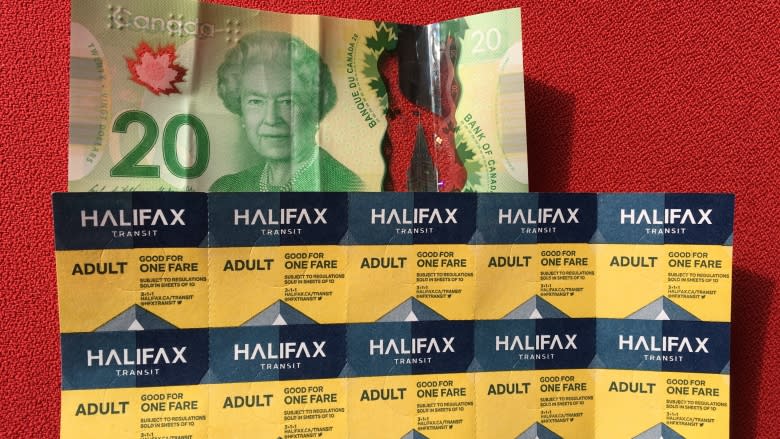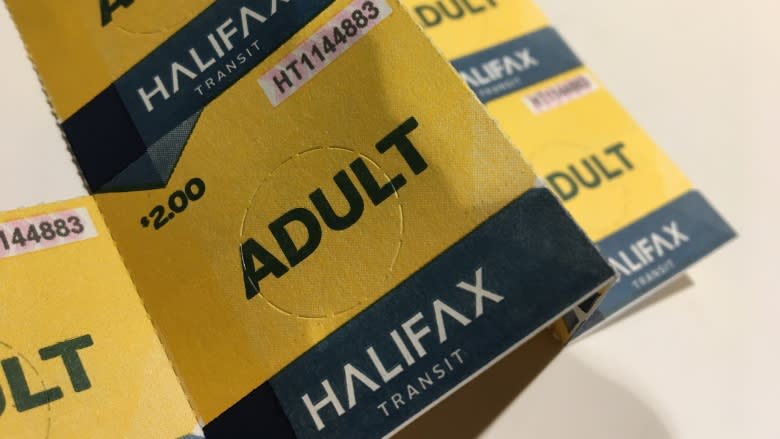New fareboxes, (much) bigger bus tickets coming to Halifax Transit
Halifax Transit is planning to update its fareboxes, but the upgrade comes with a change that some residents view as a doubling down on paper-based technology in this electronic era.
The municipality issued a tender on Wednesday seeking a provider of bus tickets that will have enhanced security features, including infrared ink to reduce the likelihood of fraud.
The specifications outlined in the tender require that each ticket be six inches long by 2.75 inches wide. That's roughly the size of Canada's paper currency and about the same size as six to eight current bus tickets.
The tickets are not reusable and the paper will be recycled after tickets are used.
Residents reacted to the change online with both humour and annoyance.
Halifax Transit's manager of technical services told the CBC's Information Morning on Friday the vendor of the new fareboxes recommended that the tickets be the size of paper currency.
"The concern is that the smaller tickets wouldn't be pulled through the mechanism that accepts bills," said Mark Santilli. "So they would get jammed and we'd end up with quite a few buses that weren't able to accept tickets after the first one."
He acknowledged the increase in size is "not an ideal change," but said the new fareboxes are a step toward a payment system that would accept something like a smart card, debit or credit system or mobile app. With the addition of a small piece of hardware, the new boxes can be modified to accept that new technology.
Santilli said Halifax Transit chose not to implement an electronic payment system at the same time as the fareboxes because when the municipality issued the original tender, none of the potential vendors were able to meet all the requirements to the municipality's satisfaction.
"I'm sure there's countless examples of other agencies kind of diving in a little too quickly and the project turns into a bit of a mess in terms of budget and time delays," he said. "So we figured breaking it up into multiple phases was the safest option to ensure that we were going to come away with a quality solution as quickly as we could."
Santilli estimated an alternate payment system could be set up about 18 months from now.
The new tickets will be introduced in late 2018 or early 2019 and the fareboxes will be introduced about three months later.
Riders will be able to obtain their own transfers by pressing a button on the farebox, but they will only be printed when the bus is stopped. That's because the driver's interface alternates between the automatic vehicle location system and the fare system, and the two cannot operate at the same time. Santilli said that helps improve safety, since the driver won't be distracted by passengers asking for transfers.
The fareboxes will also count cash payments and verify that an adequate amount has been deposited with a green checkmark and a "ding" sound. If not enough has been paid, the box will show a red X and make a buzzing sound. The system will not provide change.
The changes come with a price tag of $7 million, plus about $1.2 million in support and maintenance over five years.
Asked if that expense will be passed along to riders in the form of a fare increase, Santilli said, "not that I'm aware of."
With files from the CBC's Information Morning
Read more articles from CBC Nova Scotia



